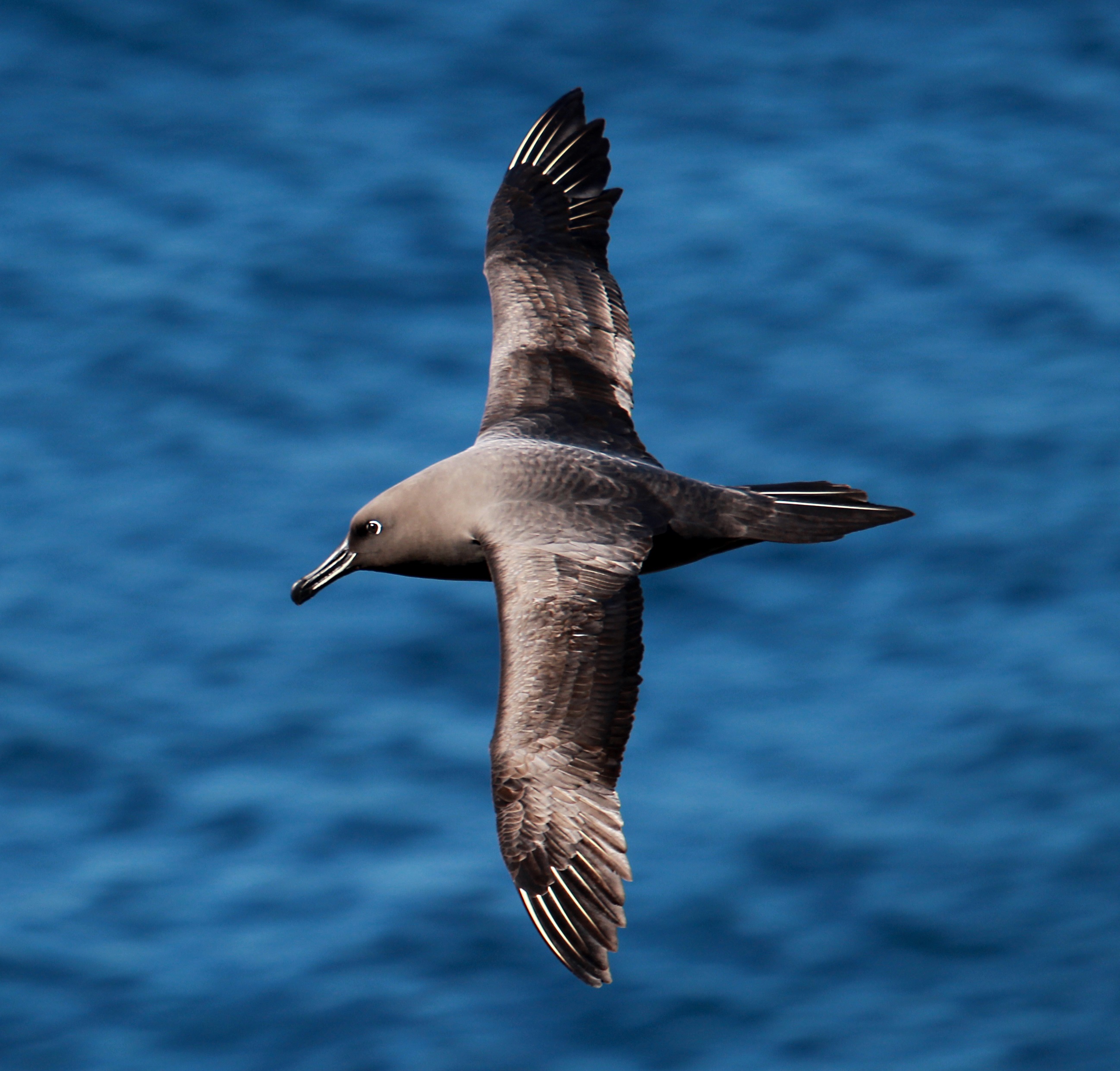 An Endangered Sooty Albatross Phoebetria fusca in flight. Photograph by Stefan Schoombie
An Endangered Sooty Albatross Phoebetria fusca in flight. Photograph by Stefan Schoombie
Lily K. Bentley (Department of Zoology, University of Cambridge, Cambridge, UK) and colleagues have published open access in the Journal of Biogeography on how competition influences habitat preferences and niche segregation among Endangered Sooty Albatrosses and Near Threatened Light-mantled albatrosses, examining their foraging behaviour when living together and separately.
The paper’s abstract follows,
“Aim
Competition is often proposed to drive niche segregation along multiple axes in speciose communities. Understanding spatial partitioning of foraging areas is particularly important in species that are constrained to a central place. We present a natural experiment examining variation in habitat preferences of congeneric Southern Ocean predators in sympatry and allopatry. Our aim was to ascertain consistency of habitat preferences within species, and to test whether preferences changed in the presence of the congener.
Location
Southern Hemisphere.
Taxon
Multiple colonies of both species within the genus Phoebetria (sooty albatrosses).
Methods
The two Phoebetria albatrosses breed on islands located from ~37–55°S – sooty albatrosses (P. fusca) in the north and light-mantled albatrosses (P. palpebrata) in the south – with sympatric overlap at locations ~46–49°S. We analysed GPS and PTT tracks from 87 individuals and multiple remotely sensed environmental variables using GAMs, to determine and compare the key factors influencing habitat preference for each species at each breeding colony.
Results
While foraging habitat preferences are consistent in light-mantled albatrosses, there is divergence of preferences in sooty albatrosses depending on whether they are in sympatry with their congener or in allopatry.
Main Conclusions
This study represents the most comprehensive work on this genus to date and highlights how habitat preferences and behavioural plasticity may influence species distributions under different competitive conditions.”
Reference:
Bentley, L. K., Phillips, R. A., Carpenter-Kling, T., Crawford, R. J. M., Cuthbert, R. J., Delord, K., Dilley, B. J., Makhado, A. B., Miller, P. I., Oppel, S., Pistorius, P. A., Ryan, P. G., Schoombie, S., Weimerskirch, H., & Manica, A. (2024). Habitat preferences of Phoebetria albatrosses in sympatry and allopatry. Journal of Biogeography, 00, 1–13. https://doi.org/10.1111/jbi.14966
15 July 2024

 English
English  Français
Français  Español
Español